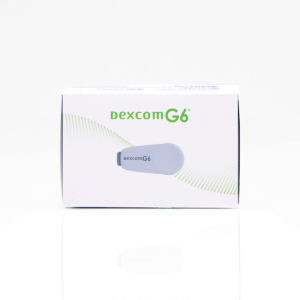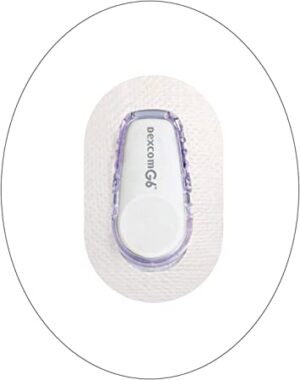Glucose testing is a crucial component of diabetes management. It enables individuals with diabetes to monitor their blood sugar levels and adjust their insulin intake or dietary choices accordingly. Accurate and fast glucose testing methods are essential for effective diabetes management, as they help individuals stay on top of their condition and prevent potentially serious health complications.
In this article, we will discuss the different glucose testing methods available, including traditional finger-stick tests, continuous glucose monitoring systems, and non-invasive testing methods. We will also provide tips on how to choose the best glucose testing method for your needs and how to use it effectively. Whether you are newly diagnosed with diabetes or have been living with it for years, accurate and fast glucose testing is key to managing your condition and maintaining good health.
Introduction
The testing of glucose levels is an important part of managing diabetes and determining the effectiveness of treatment. Glucose testing can be done in several ways and is typically done at home with a glucose meter. This device measures the amount of glucose in a person’s blood and can provide an accurate picture of blood sugar levels. Other methods of testing glucose include blood tests, urine tests, and continuous glucose monitoring.
Blood tests represent the prevailing method of evaluating glucose levels. The process involves extracting a sample of blood from either the finger or arm and subsequently analyzing it for glucose content. This diagnostic approach is commonly regarded as the most precise and reliable technique for assessing glucose concentrations and is frequently utilized in the diagnosis of diabetes.
Urine tests are another option for testing glucose levels. A sample of urine is collected and tested for glucose levels. This method is not as accurate as a blood test, but it can provide a snapshot of a person’s glucose levels.
Finger Stick Testing
Finger stick testing is an important part of diabetes management, as it allows people with diabetes to check their blood glucose levels quickly and accurately. Finger sticks are quick and easy to use, and they provide an accurate reading of blood glucose levels in a matter of minutes. The test requires a lancet to puncture the skin and a meter to measure the glucose levels in the blood.
Finger stick testing is used to monitor blood glucose levels on a daily basis to adjust insulin doses, make dietary changes and modify physical activities in order to keep blood sugar levels in a healthy range. It is also used to help diagnose diabetes, identify problems with blood sugar control, and detect low blood sugar (hypoglycemia).
Finger stick testing is simple, fast, and convenient. It can be done at home or in the doctor’s office. The procedure is painless, and the results can be read in minutes. It is also relatively inexpensive and can be done without a prescription.
Continuous Glucose Monitoring (CGM)
Continuous Glucose Monitoring (CGM) is a state-of-the-art medical device designed for the purpose of monitoring blood glucose levels in individuals suffering from diabetes. This device is placed on the body, and through the use of wireless technology, it transmits real-time readings to a smartphone or other compatible devices. The CGM system continuously tracks glucose levels over a prolonged period, thereby providing an early warning signal in case of any significant fluctuations. This allows the user to promptly take the necessary measures, such as administering insulin or undergoing other treatments, to maintain proper glucose control.
CGM devices measure glucose levels with a tiny sensor placed beneath the skin that reads glucose levels in the interstitial fluid. The data is sent to a monitor or smartphone, where it is displayed in graphs and charts. This makes it easy to spot trends and patterns in your blood sugar levels, allowing for more precise adjustments in medication.
CGM may also serve to identify the occurrence of hypoglycemia or hyperglycemia, duly notifying the user when their blood glucose levels fall outside the desired range. This capability enables the early detection of abnormal glycemic fluctuations, helping to prevent potentially hazardous medical conditions, such as diabetic ketoacidosis or hypoglycemic coma.
Flash Glucose Monitoring (FGM)
Flash Glucose Monitoring (FGM) is an innovative and convenient way to measure blood glucose levels in people with diabetes. FGM is a minimally invasive and pain-free method of monitoring glucose levels, which means that users are not required to take any blood samples or to prick their finger. Instead, FGM uses a small, discreet sensor that is worn on the arm for up to two weeks at a time that’s going to be replaced with a new sensor.
The sensor uses a tiny filament that lies just beneath the skin’s surface and measures the interstitial glucose levels in the body. The sensor is then linked to a reader that displays the glucose levels and can also be used to track trends over time. The reader can also be linked to other devices such as smartphones or computers, allowing users to access their data in instantly.
This method of monitoring glucose levels by using Dexcom G6 receiver is much less invasive than traditional methods, and can provide people with diabetes with more accurate and timely information about their glucose levels. It also eliminates the need for finger pricking and other painful methods of testing.
Choosing The Right Method
When it comes to diabetes management, glucose testing is an essential part of the process. There are several methods of glucose testing to choose from, and it’s important to choose the right method for your individual needs. Some of the most popular methods include self-monitoring blood glucose (SMBG), continuous glucose monitoring (CGM).
Self-Monitoring of Blood Glucose (SMBG) pertains to the practice of testing glucose levels at home with the use of a glucose meter. This method necessitates the availability of supplies, such as lancets, test strips, and a glucose meter. SMBG confers several benefits, including the ability to track one’s own glucose levels and obtain immediate feedback following testing. However, SMBG mandates frequent testing, and the required supplies can often be expensive, which represents a significant disadvantage of this approach.
Conclusion
Glucose testing is a critical component of a successful diabetes management plan. It allows people with diabetes to monitor their blood sugar levels and adjust their medications or diet accordingly. There are several methods of glucose testing available, each with its own advantages and disadvantages. The most commonly used method is finger prick testing, which involves drawing a drop of blood from the fingertip and placing it on a test strip. This method is fast, accurate, and relatively inexpensive. Other methods include continuous glucose monitors, which measure glucose levels via a sensor placed on the skin, and lab tests, which require a blood sample sent to a laboratory for processing.



